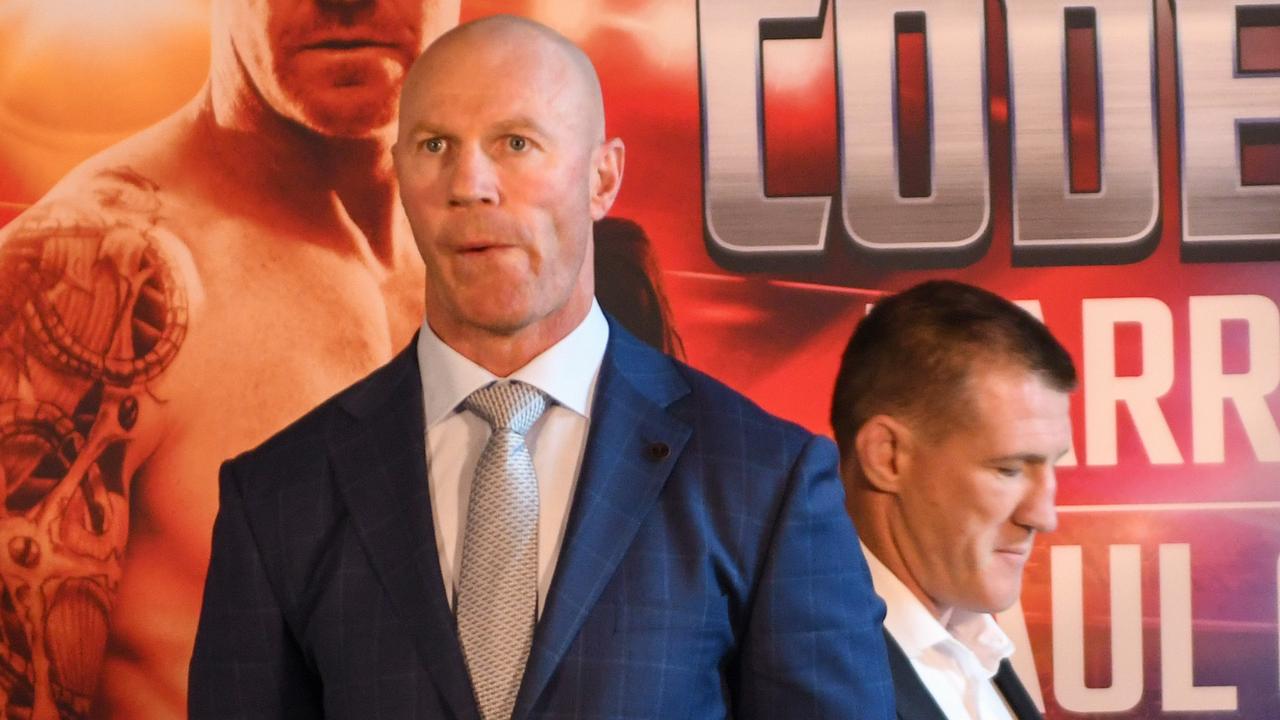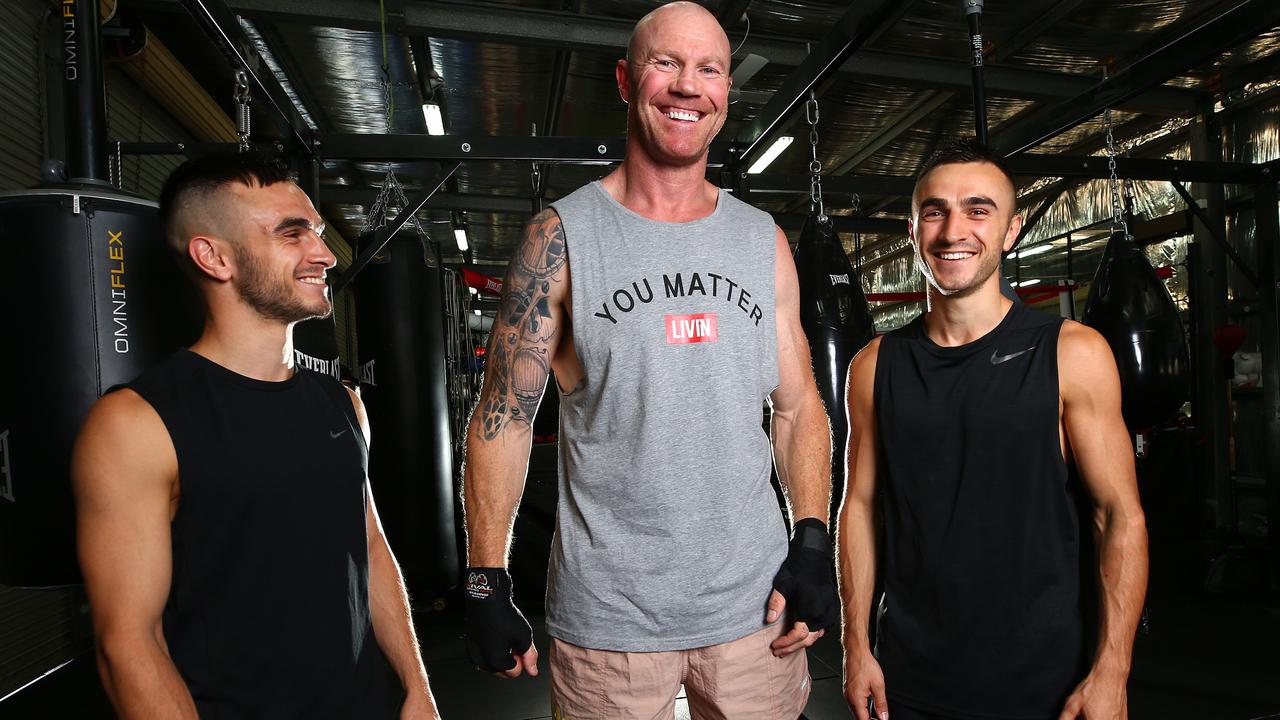Cyril Rioli follows Hawthorn fitness plan aimed at ending his hamstring curse
IT never had an official name, but for the sake of theatrics, let’s just call it Operation: Disarm the Sniper.
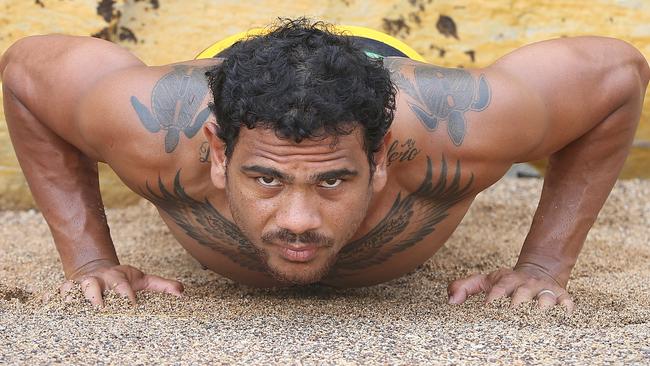
AFL
Don't miss out on the headlines from AFL. Followed categories will be added to My News.
IT never had an official name, but for the sake of theatrics, let’s just call it Operation: Disarm the Sniper.
It was just one of many projects Hawthorn enacted in the afterglow of the club’s back-to-back premiership triumph last September.
Some clubs might be sated by sustained success; not Hawthorn. The most successful club over the past half century wants more, and that requires good planning and good people, not just looking in the rear-view mirror.
While the Hawks have consistently tried to strengthen their list each season — James Frawley and Jono O’Rourke to name a few for 2015 — they also believe in the power to improve from within.
And that’s where the “Sniper” comes in.
Cyril Rioli is unquestionably one of the most exciting footballers in the AFL when he is fit and firing. But that excitement in recent seasons has been tempered by a series of hamstring injuries that have seen him play only 28 of a possible 51 games since the start of 2013.
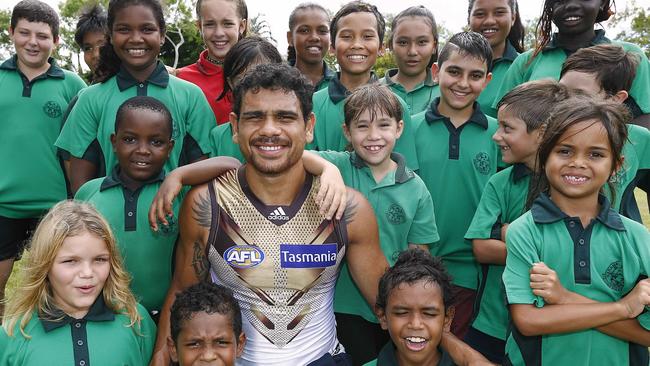
Sure, he has made it back for the most important games of any season — the past two Grand Finals — but there have been some touch and go moments.
Last year was particularly tight in terms of timing. When he went down with his second hamstring injury of the season in the Round 15 game against Gold Coast in Launceston, it was feared that his season might have been over.
That night Rioli tweeted: “Yep, that sniper got me again!”
That’s the way it has looked in a number of his hamstring episodes in recent seasons. One moment his legs are pumping in full flight; the next he is clutching his hamstring and it appears as if he has been shot.
So while Hawthorn was able to methodically plot a pathway back for the 25-year-old to play in last year’s Grand Final against Sydney — off the back of only three quarters for Box Hill in the VFL grand final — it also knew that it needed to find a solution to the problem.
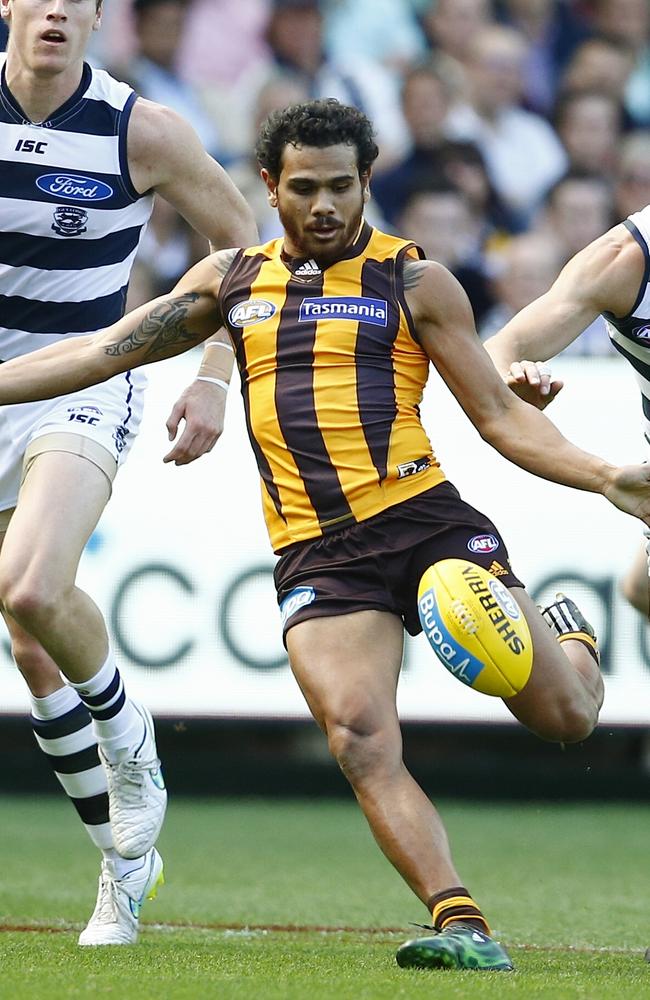
It meant an overhaul of his training regimen and the club that has been on the cutting edge of player welfare and injury prevention began an exhaustive search for information here and abroad.
“I want to play a lot more football,” Rioli told the Sunday Herald Sun this week. “We’ve had a plan and we’ve stuck to it.”
“’Jack’ (Hawthorn head fitness coach Andrew Russell) had a talk to me before the pre-season started and he ran me through the program that he wanted me to do.
“He told me we were going to try some new things. He had a plan, and there was no going outside of the plan.
“At times early on, when I first started having a few hamstring injuries, it was just like ‘yeah, the sniper has got me again’. I would get to go back to Darwin for awhile and have some time off.
“But it just got so frustrating in the past few years, so we changed some things to get the best out of myself.”
Russell explained: “As with everything at Hawthorn, we have got a really integrated approach to what we have done with Cyril.”
“We sent (club physiotherapist) Anthony Fernon over to Barcelona to a hamstring conference. We’ve had input from the AIS and we’ve got some great people inside our football club as well.
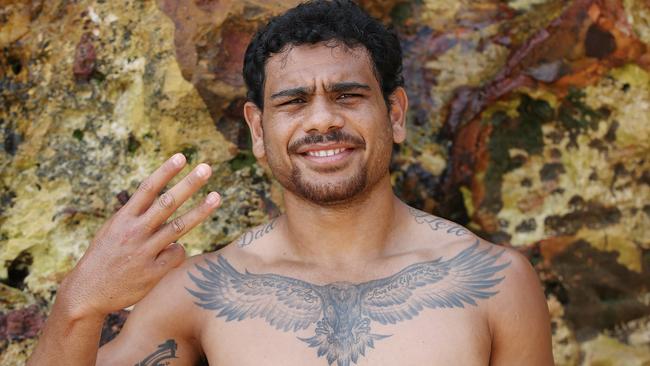
“We stripped it all back and said ‘what are the things that he needs to work on’.”
Importantly, Russell and his team identified strength deficiencies in Rioli’s hamstrings and glutes, and set to work on a program to change that.
“There are certain players who are more predisposed to (hamstring issues) and you have to condition those guys at a higher level or a higher intensity than the other players who are at a lower risk,” he said.
“The first thing we did was identify what those strength deficiencies were and worked really hard on improving his maximum strength and his strength endurance in the gym. Before Christmas, he didn’t do much ball work, we were basically in the gym and we did a lot of endurance running and a lot of hill running.
“We just thought we needed to better condition his whole posterior chain — his hamstrings, glutes and calves. We needed to get greater muscular endurance and build more muscular power because he is such a powerful athlete.
“We needed to be able to condition him so that he can handle the power that he can generate because he can generate more power than most other players in the game.
“We actually tried to go beyond the game intensity ... every seven to 10 days during that (preseason period) we did 20-30 per cent more than he would do in a game in terms of running intensity.”
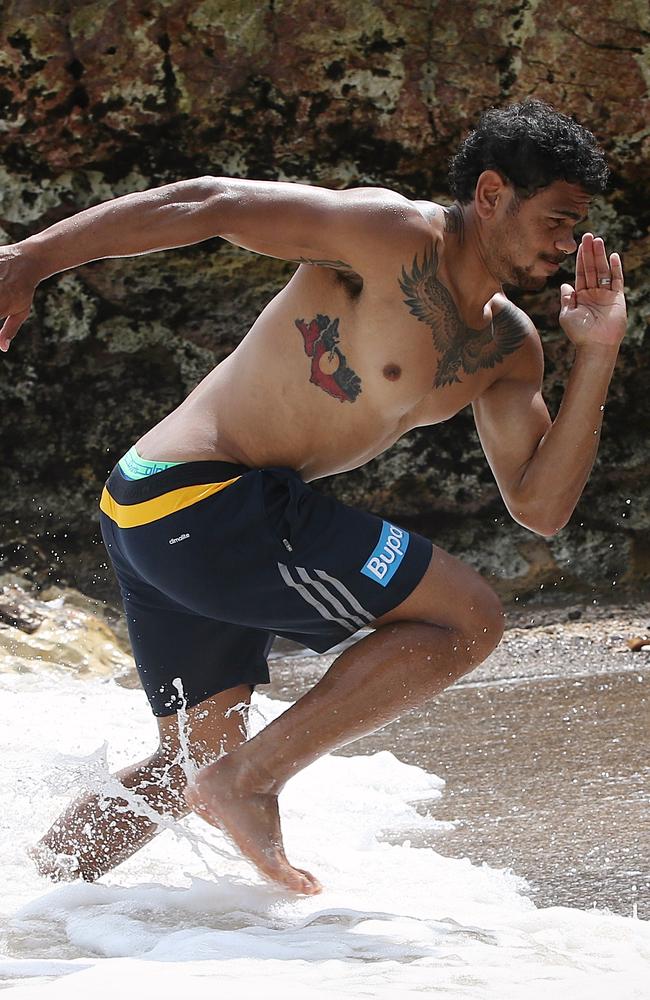
Rioli loved the challenge and responded well in the belief that it could potentially guard against the Sniper reappearing on a regular basis.
“All the different work I’ve done has really helped me,” Rioli said. “There has been a lot more hill runs, a lot more intensity in my training sessions and that has definitely helped me push the hammies along.
“As the weeks have gone on, I have just got more and more confidence in my body.”
Rioli hopes the hard work he had done will guard against the uncertainty he had leading into last year’s finals series, where his place in the senior side went down to the wire.
Two weeks before the AFL Grand Final he pulled up sore from a training session and he almost aborted his comeback.
“I didn’t want to let the team down by going into a game if I wasn’t right, so I was close to pulling the pin,” he recalled. “But I had a few days off and then felt fine after that. The next session I was a lot better.”
Rioli managed to return for a cameo with the Box Hill Hawks, but he still wasn’t sure if it would be enough to convince the club to choose him for the AFL Grand Final the following week.
Making matters even more delicate was the fact that he shared the locker next to Jonathan Simpkin, the 2013 premiership Hawk at risk of being squeezed out of the 2014 Grand Final side if Rioli was to return.
“It was hard, we were the next locker to each other,” he said.
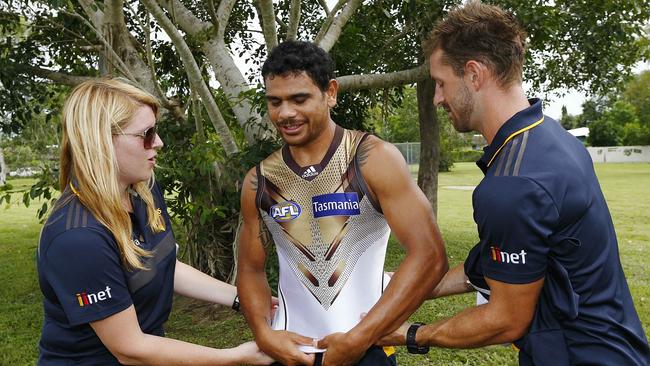
His moment of truth came when his mobile phone buzzed and the name of coach Alastair Clarkson came up on the screen on the Wednesday leading up to the game.
“Clarko just said: ‘We are going to pick you’. I was stoked and switched on from there,” he recalled.’
Instead of making Rioli the sub, as some had speculated, Clarkson started him in the heat of battle in an effort to give him a sign that the match committee had full confidence in him.
Rioli had five kicks, four handballs and two tackles in the club’s big Grand Final win. But the pressure he created, the blocks he made, and the intensity he brought more than justified his selection and earned him his third premiership medal from only seven AFL seasons.
Russell said: “His mental preparation was outstanding. He had worked on his physical preparation for a long time, but to have the ability to turn up on Grand Final day and play at that level is very underrated. He knew what he could do and what he couldn’t do, and he played it beautifully.”
Rioli has the belief that his new program and his greater strength in his legs could play a role in keeping the Sniper at bay as much as possible.
Russell says the proof will still be in the pudding, though the club has done as much as it can to give him a good base.
Rioli’s Round 1 theatrics against Geelong last week showed just how important he is to the Hawks. There was the superb leap off two feet to outmark Mark Blicavs and later the deft handball from an almost impossible position to provide Luke Breust with a memorable goal. Some commentators questioned whether he had known Breust was there or whether he had handballed in hope.
Rioli smiled when asked this week: “Yeah, I knew he was there.”

